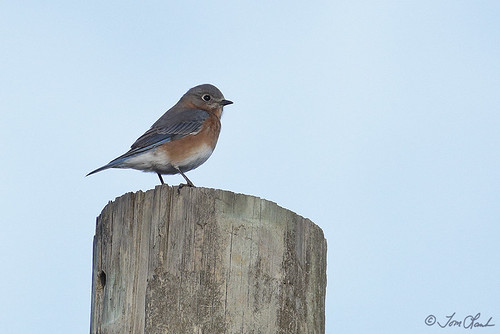We observed the acini to be monotypic, i.e. comprising the secretory cells of 1 variety only. In transverse sections close to the aesthetasc pad, the glandular tissue occupies almost fifty% of the lumen of the big flagellum (Determine 4A). The Antibiotic-202 chemical information glands can be recognized by their proximal ducts and the tubulo-acinar arrangements of the cells (Figure 4A). Acini have transversal diameters between 5000 mm (Determine 4B), even though they can be many hundreds of micrometers extended (Determine 3B, D). Counting the overall number of glandular acini in 15 antennules of C. clypeatus reveals enormous individual distinctions with no any clear relation to physique size, number of annuli for each flagellum or differences between women and males (Figure five).
Aesthetasc-associated epidermal glands in Coenobita: pores, canal cells and distal duct. A, I: TEM H: cLSM. A: Longitudinal area of a glandular pore of C. compressus. C: Collection of transverse sections showing the distal component of conducting canal on distinct section amounts (from distal to proximal). C: One solitary duct passing by way of the cuticle of C. clypeatus carefully underneath the glandular pore. D: Paired glandular ducts accompanied by cytoplasmic protrusions of the canal cells, on proximal level of the flagellar cuticle. C. clypeatus. E: Gland duct below the flagellar cuticle in C. clypeatus. F: Gland duct of C. compressus passing via the thin epidermis under the flagellar cuticle. The duct lumen is lined by thin epicuticle (cuticular intima). G: Duct passing via the hemolymphatic room in C. compressus. H: Optical sagittal segment of the huge flagellum of C. clypeatus showing a number of gland ducts (crimson backfilling with tetramethylrhodamine dextran) in parallel orientation. I: Gland ducts of C. clypeatus (arrowheads). Ae, aesthetasc CC, canal cell Cu, cuticle European, epicuticle Epi, epidermis HS, hemolymphatic space Mi, mitochondrion Mu, mucous N, nucleus pCu, procuticle.
Although the morphological firm of the two types of acini is usually equivalent, many ultrastructural distinctions exist and at least two of them are elucidated in the different staining results of the secretory cells visible in histological sections. Secretory cells with mild cytoplasm have massive, spherical nuclei with light caryoplasm and notable nucleoli (Determine 6A). The nuclei are situated approximately in the centre of the cells (Figures 4Bç¿, 6A). The cytoplasm is densely packed with fairly small vesicles stuffed with an electron-lucent substance, most almost certainly secretion (Figure 6A). The nuclei of the secretory cells with more robust osmiophilic cytoplasm are fairly smaller sized (Figure 6A). They are predominantly positioned in the  basal portion of the cells (Figures 4B 6A).21791628 Their nucleoli are inconspicuous and hardly noticeable. The cytoplasm is packed with comparatively big vesicles stuffed with a slightly less electron-lucent secretion and with dense endoplasmic reticulum (ER), specifically shut to the nuclei (Determine 6A). All secretory cells have a conical, columnar form with heights of three hundred mm, basal diameters of one hundred mm and apical diameters of one mm. Simply because of their alternating arrangement close to the central intermediary cell, 105 cell bodies can be counted for each transverse part (Determine 6A). The middleman cells have regular diameters of a hundred mm (Figure 6A). The slim apices of the secretory cells move by way of the middleman cells (Determine 5C). Because the proximal ducts are only about 5 mm vast, a greatest of six secretory cells can launch their products into the duct lumen at the same transverse section stage of the lumen (see Determine 6C). The secretory cells have standard apical microvilli borders but no other peculiar apical constructions like reservoirs, fibrous sieves or valves (Figure 6C). The microvilli are several micrometers lengthy and can get to the centre of the lumen (Figure 6C).
basal portion of the cells (Figures 4B 6A).21791628 Their nucleoli are inconspicuous and hardly noticeable. The cytoplasm is packed with comparatively big vesicles stuffed with a slightly less electron-lucent secretion and with dense endoplasmic reticulum (ER), specifically shut to the nuclei (Determine 6A). All secretory cells have a conical, columnar form with heights of three hundred mm, basal diameters of one hundred mm and apical diameters of one mm. Simply because of their alternating arrangement close to the central intermediary cell, 105 cell bodies can be counted for each transverse part (Determine 6A). The middleman cells have regular diameters of a hundred mm (Figure 6A). The slim apices of the secretory cells move by way of the middleman cells (Determine 5C). Because the proximal ducts are only about 5 mm vast, a greatest of six secretory cells can launch their products into the duct lumen at the same transverse section stage of the lumen (see Determine 6C). The secretory cells have standard apical microvilli borders but no other peculiar apical constructions like reservoirs, fibrous sieves or valves (Figure 6C). The microvilli are several micrometers lengthy and can get to the centre of the lumen (Figure 6C).
